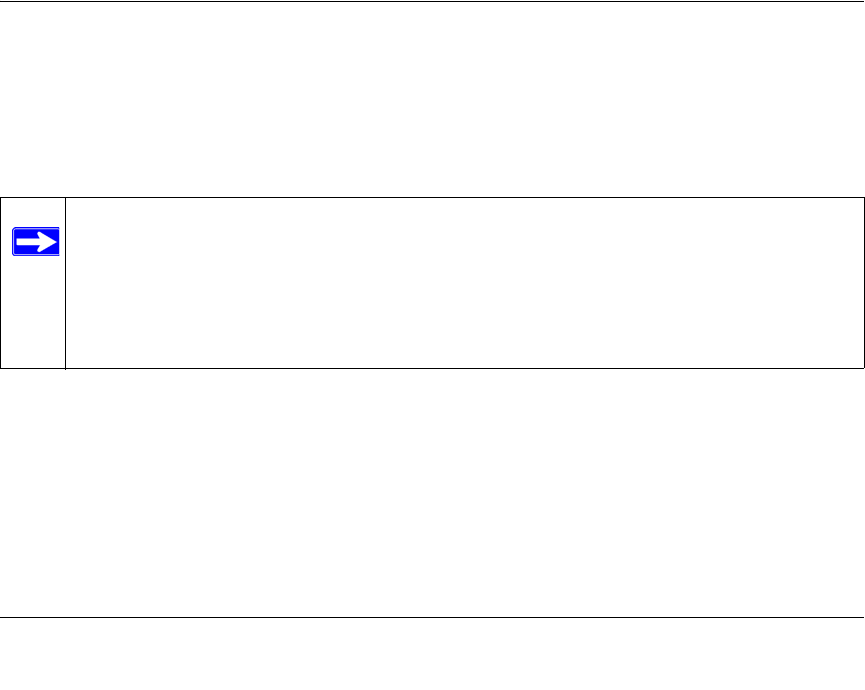User's Manual
Table Of Contents
- ProSecure Web/Email Security Threat Management (STM) Appliance Reference Manual
- Contents
- About This Manual
- Chapter 1 Introduction
- Chapter 2 Using the Setup Wizard to Provision the STM in Your Network
- Choosing a Deployment Scenario
- Understanding the Steps for Initial Connection
- Logging In to the STM
- Using the Setup Wizard to Perform the Initial Configuration
- Setup Wizard Step 1 of 10: Introduction
- Setup Wizard Step 2 of 11: Networking Settings
- Setup Wizard Step 3 of 11: Time Zone
- Setup Wizard Step 4 of 11: Email Security
- Setup Wizard Step 5 of 11: Web Security
- Setup Wizard Step 6 of 11: Email Notification Server Settings
- Setup Wizard Step 7 of 11: Update Settings
- Setup Wizard Step 8 of 11: HTTP Proxy Settings
- Setup Wizard Step 9 of 11: Web Categories
- Setup Wizard Step 10 of 11: Configuration Summary
- Setup Wizard Step 11 of 11: Restarting the System
- Verifying Proper Installation
- Registering the STM with NETGEAR
- What to Do Next
- Chapter 3 Performing Network and System Management
- Configuring Network Settings
- Configuring Session Limits and Timeouts
- Configuring the HTTP Proxy Settings
- About Users with Administrative and Guest Privileges
- Configuring Remote Management Access
- Using an SNMP Manager
- Managing the Configuration File
- Updating the Software
- Configuring Date and Time Service
- Managing Digital Certificates
- Managing the Quarantine Settings
- Performance Management
- Chapter 4 Content Filtering and Optimizing Scans
- About Content Filtering and Scans
- Configuring E-mail Protection
- Configuring Web and Services Protection
- Configuring Application Control
- Setting Scanning Exclusions and Web Access Exceptions
- Chapter 5 Managing Users, Groups, and Authentication
- About Users, Groups, and Domains
- Configuring Groups
- Configuring User Accounts
- Configuring Authentication
- Global User Settings
- Viewing and Logging Out Active Users
- Chapter 6 Monitoring System Access and Performance
- Chapter 7 Troubleshooting and Using Online Support
- Appendix A Default Settings and Technical Specifications
- Appendix B Related Documents
- Index

4-1
v1.0, September 2009
Chapter 4
Content Filtering and Optimizing Scans
This chapter describes how to apply the content filtering features of the STM and how to optimize
scans to protect your network. This chapter contains the following sections:
• “About Content Filtering and Scans” on this page.
• “Configuring E-mail Protection” on page 4-4.
• “Configuring Web and Services Protection” on page 4-22.
• “Configuring Application Control” on page 4-44.
• “Setting Scanning Exclusions and Web Access Exceptions” on page 4-46.
About Content Filtering and Scans
The STM provides very extensive Web content and e-mail content filtering options, Web browsing
activity reporting, e-mail anti-virus and anti-spam options, and instant alerts via e-mail. You can
establish restricted Web access policies that are based on the time-of-day, Web addresses, and Web
address keywords. You can also block Internet access by applications and services, such as instant
messaging and peer to peer file sharing clients.
Note: For information about how to monitor blocked content and malware threats in real-
time, see “Monitoring Real-Time Traffic, Security, Statistics, and Web Usage” on
page 6-11. For information about how to view blocked content and malware threats
in the logs, see “Querying the Logs” on page 6-22. For information about how to
view quarantined content, see “Viewing and Managing the Quarantine Files” on
page 6-33.










